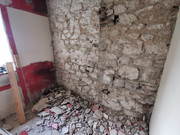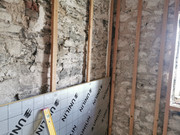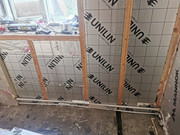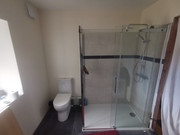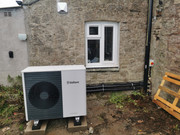Time for a little update.
The architect walked away when he heard how low our budget to renovate was so we are just going to muddle through on our own.
First the big news is we have a working heating system for the first time ever

. An ASHP in conjunction with rads. This I did not do myself and left this to a local firm with a good reputation. Its been in around a month and it is very nice having the whole place warm-able for the first time ever. My siblings childhood memories of the farmhouse is being cold and wet much of the time!
We are also double glazed. Nothing exciting just some decent, sliding sash style PVC
I have nearly finished a utility/bathroom. Its on the only walls that did not get the EWI treatment so I have insulated it inside. The plan is to have this as a nice warm room to dry cloths and hang wet coats. It has the new hot tank, a decentralised in wall MVHR unit and hopefully excessive insulation to keep it toasty. Had to take all the render and plaster off the walls as it was just shelling off when I tried to fix to it.
The build up of the walls
25x50mm battens mounted to the wall so they are vertical
25mm PIR between them
50mm PIR over the top and carful foam filing of gaps with foil taping to work as a moisture barrier.
The ceiling is 100mm PIR between the joists and another 50mm underneath.
All dry lined as I couldn't get hold of a plasterer at the time
The floor has got 50mm of XBS Jakoboard which you can tile straight onto
Still needing to make a door and a worktop. I milled some ash boards for the job back in the summer but they are not yet dry enough so another thing for the "to do" list.
As for potential damp issues I am less certain we have rising damp and it could just be condensate forming on the walls near the floor due to thermal bridging. Not seen any signs since the heating system went in but then its been very dry so time will tell.
A selection of pics
